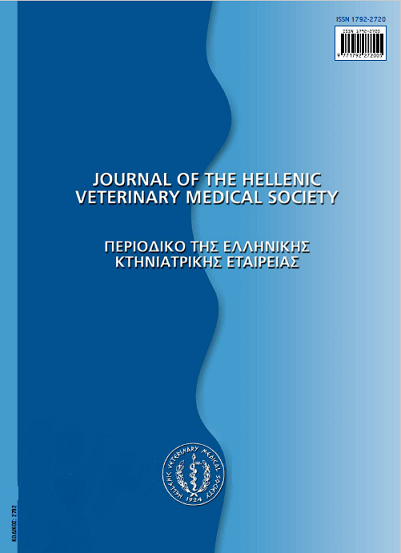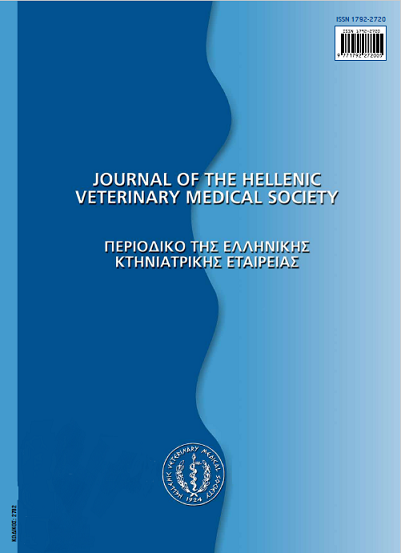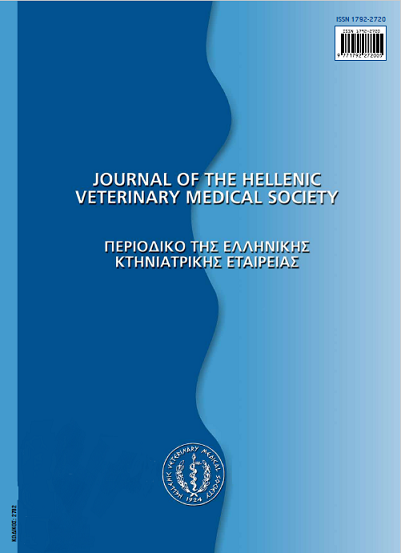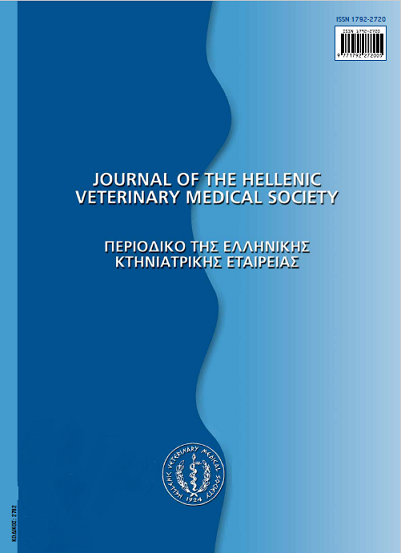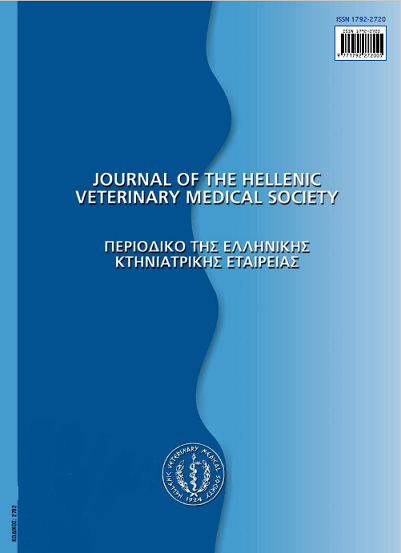Feline bartonellosis· A review
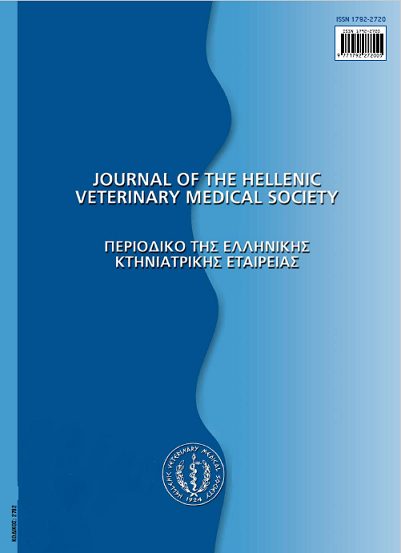
Abstract
Bartonella infection is caused by Gram negative bacteria commonly isolated from domestic cats. Cats are the major reservoir of Bartonella henselae, B. clarridgeiae and B. koehlerae which are transmitted to humans, while they are accidental host of B, quintana. Β, bovis και Β, vìmonìi subsp. berkhoffìi. The pathogen is transmitted among cats mainly
by fleas while other vectors are also suspicious for transmission since the bacteria have been isolated from ticks and flies.
The bacterial pathogenicity may be emphasized by the strain of the bacterium and the immune status of the infected host. Most of the infected eats remain asymptomatic. In the natural occurring cases of feline bartonellosis uveitis, chronic gingivostomatitis and endocarditis have been reported. Mild anemia and leucocitosi s in the early phase of the infection has been also reported. Diagnosis is based on the detection of the specific anti-bartoneila antibodies by the inderict immunofluorescent test, ELISA and Western blot assays. Molecular biology techniques mainly PCR, cytology, histopathology and blood culture have also been employed for the direct detection of the pathogen. Prolonged antimicrobial therapy results to the reduction of bacterial burden without total elimination of the pathogen.
Bartonella henselae is the causative agent of cat scratch disease, a human infection usually characterized by persistent regional lymphadenopathy and less frequently fever while angiomatosis or hepatic peliosis have been reported mainly in immunocompromised patients. It is transmitted to humans by cat scratches or bites. The most effective means of protection is regular flea control Additionally, commonsense precautions and hygiene such as washing hands after handling pets and clean any cats and bites or scratches promptly are recommended especially in population at great risk.
Article Details
- How to Cite
-
ATHANASIOU (Λ.Β. ΑΘΑΝΑΣΙΟΥ) L. V., CHATZIS (Μ.Κ. ΧΑΤΖΗΣ) M. K., KONTOU (Ι. B. ΚΟΝΤΟΥ) I. V., KONTOS (Β. I. ΚΟΝΤΟΣ) V. I., & SPYROU (B. ΣΠΥΡΟΥ) V. (2017). Feline bartonellosis· A review. Journal of the Hellenic Veterinary Medical Society, 63(1), 63–73. https://doi.org/10.12681/jhvms.15399
- Issue
- Vol. 63 No. 1 (2012)
- Section
- Review Articles
Authors who publish with this journal agree to the following terms:
· Authors retain copyright and grant the journal right of first publication with the work simultaneously licensed under a Creative Commons Attribution Non-Commercial License that allows others to share the work with an acknowledgement of the work's authorship and initial publication in this journal.
· Authors are able to enter into separate, additional contractual arrangements for the non-exclusive distribution of the journal's published version of the work (e.g. post it to an institutional repository or publish it in a book), with an acknowledgement of its initial publication in this journal.
· Authors are permitted and encouraged to post their work online (preferably in institutional repositories or on their website) prior to and during the submission process, as it can lead to productive exchanges, as well as earlier and greater citation of published work.



